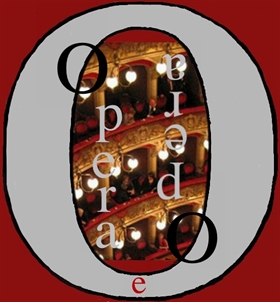Written by Natalia Di Bartolo —
The precursor of ’ Expressionism Edvard Munch (1863-1944) is again on display in the Austrian capital with its graphic works, twelve years after the major retrospective dedicated to him in 2003 and which inaugurated the reopening of the Albertina in Vienna.
In view 25.9.2015 to 24.1.2016, open fromDisplays approximately 80 of the most famous works by the artist Norwegian. All belong to private collectors and are made available to the Albertina in very exceptional cases for this occasion.
The splendors of an artist are sometimes misunderstood by norms. In the case of Munch, from immediate, unavoidable connection between the name and what is considered his masterpiece, or at least his most famous painting: l ’ scream.

But Munch was not only a painter, he was also (and you'd have to add especially) a large graph.
The graphic activity of many artists is often underestimated, since, if we consider the custom of considering graphic works as multiples, their economic value seems to decrease and, proportionally, even the artistic interest in them. Instead, the drawing So what graphic assets of an artist are, in the opinion of the writer, basics for his education and also for the “judgment” that on it and on the whole we can give by historians and experts. A great hand Designer is also crucial for a painter, even for an abstractionist.

Needless to reignite controversy here, but to make Visual art is a must know how to draw from life. Then you can afford any innovation or eccentricity. Perhaps not everyone knows, to give an illustrious example without going too far back in time, that Picasso was a genius of figurative design.
And’ the case also of Munch, in particular, great designer, with a light and agile, able to fix with seemingly simple graphic means those signs at the same time elegant and essential, almost abstract at times, leaving them then even in his finest paintings.
In particular, all’Albertina in Vienna, we are witnessing the vision of a series of graphic works of exquisite workmanship, lithographs and woodcuts in particular, offering a broad cross-section on a Munch probably little known to most and that, like all artists, all looked live.
L ’ elegance, slender and almost “worn” some of his compositions stand out to the eye as a gem of consistency and stylistic and compositional cohesion. The capable hands of lithographer and the a printmakeras well as the chalcographer printer on the field, gave birth to multiples multiples are not: are real works of art that are sufficient in themselves and which are never repeated, while remaining originated from the same matrix. The works to remodel and hand coloredthen, they remain unique and unrepeatable.

Great on Munch portrait painterin vision all’Albertinain a skillful choice and significant of his best works. But not only is in view especially on Munch that folds back on itself and its own vision of life and art, in a spontaneous simplicity that is refinement of choices, even wooden array of woodblock prints: you notice in some specimens the thread veins, which are cleverly used as graphic backgrounds and are an integral part of the work. This subtlety is to detect and to exalt the vision of a broad and unusual shows like the one in Vienna, where even the color is the master, because graphic art, whatever you think, you also refined, stylized color.

In the spacious, elegant rooms of Austrian Museumthe works of Munch, selected in relatively small number, can be used in complete serenity of vision and enjoyment of the artwork, in a highly professional environment, with clear wall captions, outlining a route be followed carefully and increasingly with admiration for the greatness of the artist.

Definitely a show not only interesting, but in some respects even “illuminating” Norwegian genius.

© Natalia Dantas
PHOTO © Albertina Museum

